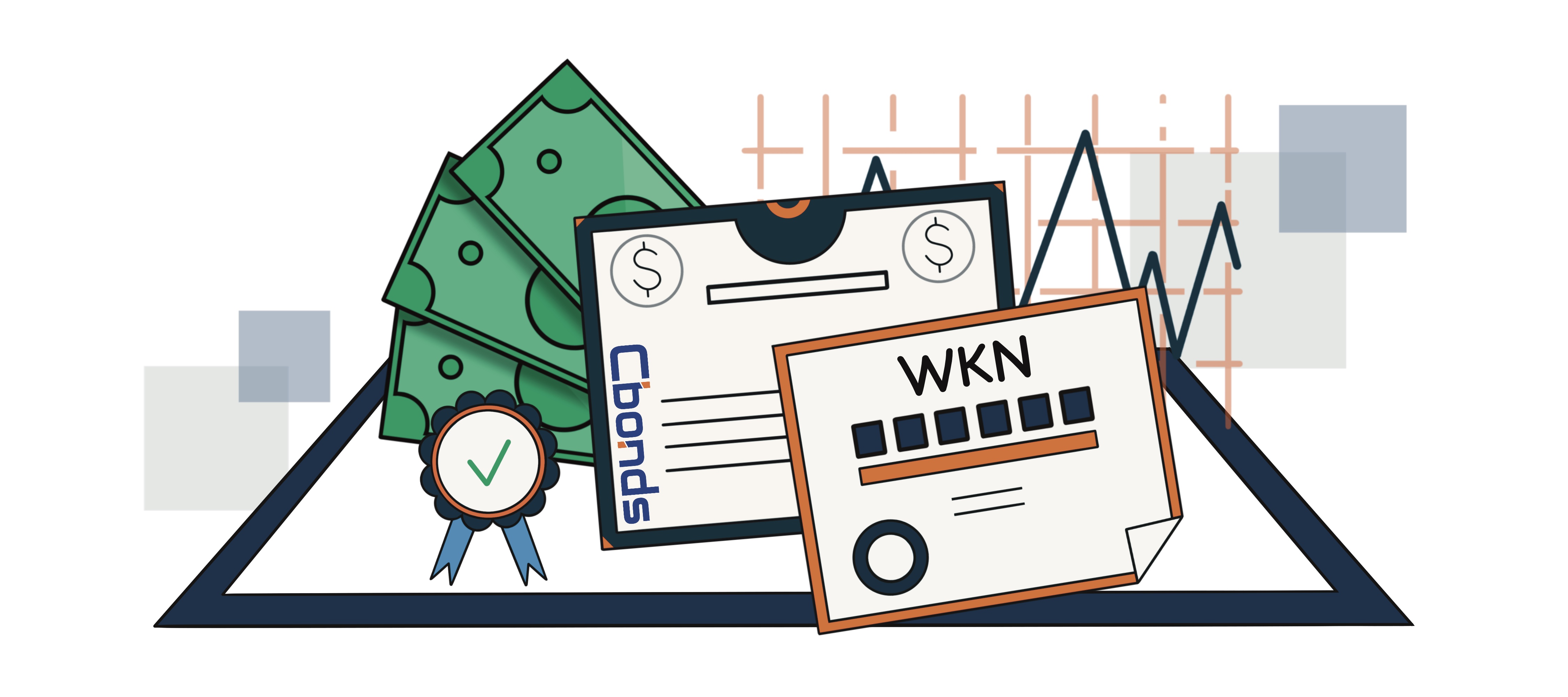By
Konstantin Vasilev Member of the Board of Directors of Cbonds, Ph.D. in Economics
Updated December 17, 2023
What is Wertpapierkennnummer (WKN)?
The letters WKN stand for Wertpapierkennnummer, it is a German securities identification code designed to uniquely identify financial instruments. It serves as a unique identification code for various financial instruments, such as stocks and bonds. Composed of six digits or capital letters, excluding I and O, the WKN stands as a key tool for investors, financial institutions, and regulatory bodies to precisely identify and differentiate between different types of securities.
Breaking down the term, Wertpapierkennnummer is a compound word in German, translating to "value–paper–identification–number." This designation reflects its fundamental purpose – assigning a distinct identifier to financial securities. Until March 2000, the WKNs were divided into different number ranges that represented different types of securities (e.g., stocks, warrants, funds, etc.). The WKN definition underwent a notable change in 2003 when it transitioned from numeric to alphanumeric, allowing for a more detailed representation of information, including the potential indication of the issuing entity in the first 2–4 letters.

Role of WM-Datenservice
WM-Datenservice plays a crucial role in the financial world by providing Wertpapierkennnummer (WKN) and DE-ISINs, which are codes used to uniquely identify securities. Acting as an authoritative source, WM-Datenservice issues and administers these identification codes in Germany. Essentially, it ensures that each financial instrument has a distinct label, making it easier for investors, financial institutions, and regulatory bodies to manage and track securities effectively.
Think of WM-Datenservice as the reliable keeper of the codes that help organize the vast landscape of financial instruments. By providing clear and unique identifiers, it contributes to the smooth functioning of the securities market, allowing stakeholders to navigate and understand the diverse world of investments with greater ease and accuracy.
Transition to International Standards
The transition to international standards in the realm of securities identification marks a significant evolution in the financial landscape, impacting the traditional role of Wertpapierkennnummer (WKN).
The introduction of International Securities Identification Numbers (ISINs) played a pivotal role in this transition. While ISINs became the globally recognized standard for securities identification, incorporating a two-digit country code and a nine-digit national identification code, WKNs remained relevant. Even with the ascendancy of ISINs, WKNs persisted, integrated into the structure of the twelve-digit ISINs. This strategic integration ensures that, despite international standardization, WKNs continue to contribute to the unique identification and classification of securities, maintaining their importance in the evolving landscape of global finance.
The Role of WKN in ISINs
The Wertpapierkennnummer (WKN) plays a notable role within the context of International Securities Identification Numbers (ISINs), showcasing a seamless integration between the traditional German identification system and the global standard. In the composition of a twelve-digit ISIN, the sixth to eleventh digits specifically represent the WKN. This incorporation ensures that the unique identifier assigned by WKN remains an integral part of the broader international identification framework.
While ISINs have become the universally accepted standard for securities identification, the inclusion of WKNs in the ISIN structure signifies a commitment to preserving the historical context and specificity embedded in the German system. Investors, financial institutions, and regulatory bodies can thus benefit from a harmonized approach that combines global compatibility with the detailed information provided by WKNs.
How to Get a WKN
-
Identify the Security. Determine the specific financial instrument for which you need a WKN. This could be a stock, bond, or another type of security.
-
Contact Your Broker or Financial Institution. Reach out to your broker or the financial institution through which you plan to conduct the transaction. These entities typically have access to databases that include WKNs for various securities.
-
Securities Registries. Check securities registries maintained by regulatory authorities. In Germany, for example, BaFin (Bundesanstalt für Finanzdienstleistungsaufsicht) oversees financial markets, and their databases may include WKNs for registered securities.
-
Consult WM-Datenservice. WM-Datenservice is a key institution that provides WKNs. If you’re unable to obtain the WKN through other means, consider reaching out directly to WM-Datenservice for assistance.
-
Work with National Numbering Agencies. National Numbering Agencies (NNAs) play a role in assigning ISINs (International Securities Identification Numbers), which may include WKNs. Consult with the relevant NNA in your country or the country of the security issuer for information.
-
Financial Statements and Documentation. Examine financial statements and documentation related to the security. WKNs are often included in official documents and reports provided by the issuer or regulatory bodies.
Bond Screener
Watchlist
Excel Add-in
API





















